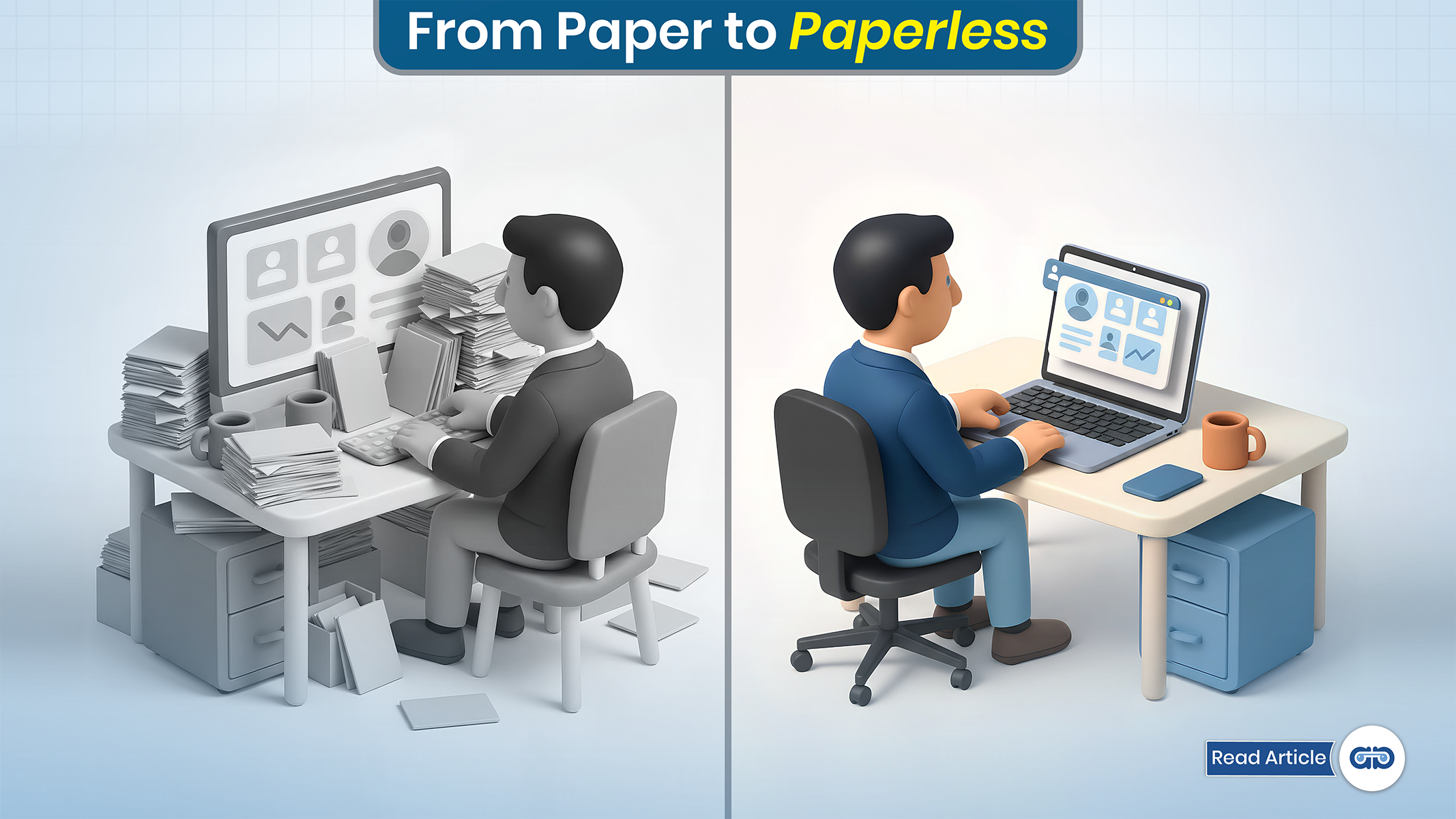Human Resources teams have long been burdened by paperwork. They handle forms, approvals, onboarding checklists, compliance files, and performance records.
Traditional manual processes consume time and slow down decision-making. It keeps HR professionals trapped in repetitive administrative work rather than enabling strategic contributions to the business.
Automation enables HR teams to shift their focus from operational execution to strategic initiatives like talent development, engagement programs, and workforce planning. By digitizing and automating routine HR workflows, organizations can reduce manual intervention, improve accuracy, ensure compliance, and increase employee satisfaction.
What is HR Automation
HR automation involves using digital tools and workflows to handle routine administrative processes such as onboarding, payroll, leave requests, benefits administration, and compliance reporting. These systems execute repetitive tasks with minimal human input, ensuring speed, accuracy, and scalability.
Scope of Automation
Modern HR automation extends beyond simple document management. It integrates workflows, self-service portals, real-time data synchronization, and intelligent analytics. By streamlining both employee-facing and backend processes, it eliminates the inefficiencies inherent in paper-based operations.
The Cost of Paper-Based HR Processes
When HR runs on paper, efficiency, accuracy, and visibility take a back seat.
Time-Intensive Workflows
Manual paperwork demands printing, scanning, storing, and retrieving physical files. Routine activities such as approvals, leave tracking, and payroll adjustments require multiple handoffs and follow-ups, delaying outcomes.
High Error Rates
Human data entry increases the likelihood of errors in critical employee records, payroll data, or compliance documentation. These errors lead to costly rework and employee dissatisfaction.
Compliance Risks
Maintaining paper records makes it difficult to enforce data security, track version histories, or ensure timely updates. In heavily regulated industries, this creates compliance gaps.
Limited Visibility
Paper-based systems prevent HR leaders from accessing real-time workforce data. Decision-making becomes reactive instead of being data-driven.
How HR Automation Eliminates Paperwork
1. Digital Documentation and E-Signatures
With HR automation, everything from offer letters to policy acknowledgments happens digitally. Documents are created, shared, and signed online, securely and in minutes.
2. Automated Workflows
Repetitive HR tasks like onboarding, benefits enrollment, or performance reviews can run on autopilot. Once a process starts, each step automatically triggers the next, with no manual follow-ups, no delays, just smooth progress from start to finish.
3. Centralized Record Management
Instead of digging through file cabinets or scattered folders, all employee records live in one secure digital space. Contracts, performance data, and compliance documents are easy to find, update, and share whenever needed.
4. Self-Service Portals for Employees
Employees no longer have to email HR for every small update. Through self-service portals, they can download pay slips, update personal details, or apply for leave, giving them control while freeing HR from routine admin work.
5. Real-Time Data Synchronization
HR automation keeps all your systems, like payroll, benefits, compliance, perfectly in sync. Updates made in one place reflect everywhere, reducing errors, avoiding duplication, and eliminating manual data reconciliation.
Boosting Productivity Through Automation
Automation doesn’t just make HR faster; it makes it smarter, more accurate, and more human-focused.
Faster Onboarding
With automated workflows, onboarding tasks like document submission, background checks, provisioning of accounts, and compliance acknowledgments are completed before an employee’s first day. This accelerates time-to-productivity.
Reduced Administrative Overhead
HR teams spend less time managing forms and approvals, freeing capacity for strategic projects, such as workforce planning, retention initiatives, or cultural development.
Improved Accuracy and Fewer Errors
Automated data entry, validation rules, and system integration minimize the chances of incorrect information entering the HR system, improving payroll accuracy and compliance reporting.
Empowered Employees
Self-service features reduce dependency on HR staff for routine requests. Employees get faster resolutions, and HR teams avoid backlogs.
Better Decision-Making
Automation provides HR leaders with real-time dashboards and analytics. This visibility enables proactive workforce planning and policy adjustments based on actual data, not assumptions.
The Future of HR Automation
HR automation is evolving beyond simple workflow optimization. With the integration of AI and predictive analytics, future systems will anticipate workforce needs, suggest policy improvements, and automate even complex decision-making processes. Paperwork will not just be reduced but rendered obsolete.
Organizations embracing automation will gain significant competitive advantages through faster hiring cycles, improved employee experiences, and better workforce insights. The HR function will shift from an administrative center to a strategic hub driving business growth.
Summary
HR automation is redefining how organizations manage people, processes, and productivity. By eliminating paperwork and manual dependencies, it creates a seamless, data-driven, and employee-centric HR ecosystem. The result is faster execution, fewer errors, and a workforce empowered to focus on innovation and growth, not administration.

